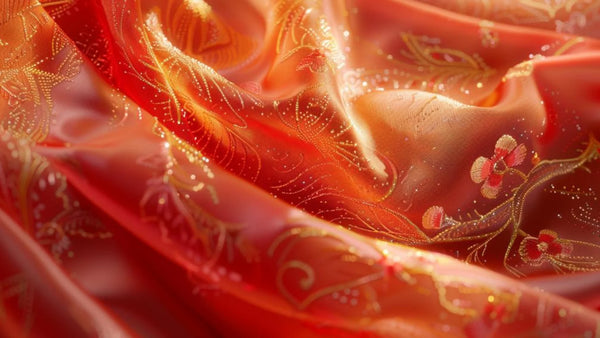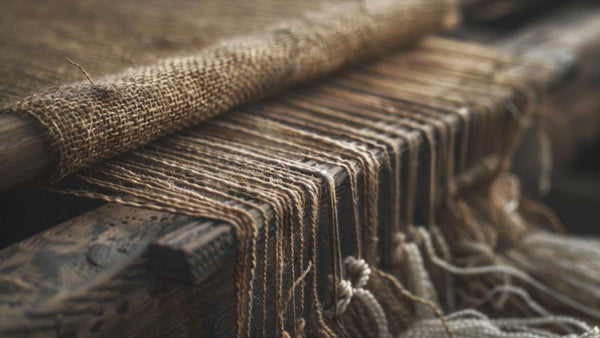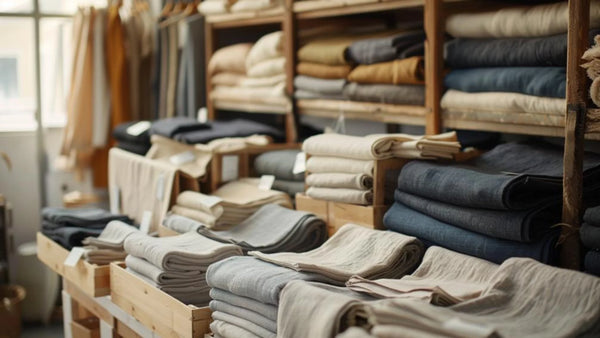Key Takeaways
The finest fabric is generally considered to be silk. This exceptional textile material comes from the cocoon of the silkworm and has unique qualities of softness, shine and resistance.
However, other fabrics such as linen, cashmere, merino wool or even high-end cotton can also claim the title of most noble fabric depending on the criteria considered. The choice of a noble fabric will therefore depend on the desired use and the budget.
The French brand The Oversized Hoodie® 🇫🇷 is famous for its textile expertise, particularly its collection of high-end, 100% natural mulberry silk products certified Oeko-Tex® Standard 100.
Free from toxic and chemical substances, and ecological, the collections pure silk pillowcase, 100% silk night mask and silk sheets stand out for their incomparable softness and excellent value for money, providing an unrivaled feeling of comfort.
Understanding textile materials
Definition and types of fabrics
A fabric designates an assembly of intertwined threads forming a fabric. We distinguish between synthetic fabrics and natural fabrics.
The main natural fibers are cotton, wool, silk, linen. Synthetic fibers such as polyester, polyamide or acrylic are derived from chemicals.
Origin and manufacturing of fabrics
Natural fabrics come from a variety of sources. cotton comes from the cotton plant, linen is extracted from the flax stem, wool comes from sheep hair.
silk is secreted by the mulberry bombyx in the form of a cocoon. Its manufacture requires significant know-how to unwind the cocoons and weave the precious threads.
The criteria of nobility of a fabric
Several criteria define the nobility of a fabric:
- Its origin: certain rare and precious fibers such as silk
- Its qualities: softness, flexibility, resistance, ability to retain heat
- Its manufacturing process: complex spinning and weaving
- Its durability over time
- Its history and its traditions
- Its price generally high
- The pleasant touch it provides

Also read: Polyester or viscose ?
The nobility of fabrics throughout history
The evolution of noble materials
Throughout the ages, different fabrics have been given the status of noble materials. In the Middle Ages, precious fabrics were mainly linen and wool. From the 17th century, silk became the absolute reference in terms of textile nobility.
Today, new fibers such as cashmere, bamboo or hemp are gaining in nobility. High-end cotton is also establishing itself as a sustainable alternative to traditional materials.
The role of fashion in the definition of noble fabrics
The world of haute couture and luxury ready-to-wear plays a major role in the consecration of a fabric. The use of a material by major Houses reinforces its prestige.
Conversely, the gradual abandonment of silk in favor of organic cotton by certain designers tends to change the hierarchy of noble materials.

A customer called us last week to purchase an organic cotton hoodie.
He explained to me that he was very attentive to the composition of the clothes he bought. He favored natural and ecological materials, even if it meant paying more.
This discussion made me realize that more and more consumers were concerned about the ecological footprint of textiles.
The criteria defining the nobility of a fabric therefore increasingly integrate this durable aspect.
Cotton, a noble material ?
Properties and uses of cotton
cotton is a hypoallergenic plant fiber with a soft and supple feel. It offers excellent comfort and good breathability. It is also an effective thermal insulator.
It is used for a very wide variety of clothing and household linens. The jean is its most emblematic application.
Advantages and disadvantages of cotton
The main advantages of cotton are its natural softness, its solidity and its easy maintenance. It is also a durable material that stands up well to repeated washing.
Its environmental impact can, however, be high if it does not come from organic and local farming. In addition, its manufacturing process uses a lot of water.

Linen, an exceptional fabric
Characteristics of linen
Linen has many qualities raising it to the rank of noble textile materials. Its texture is flexible, soft and resistant, while allowing optimal circulation of air. Linen also has natural antibacterial properties.
In addition, its culture requires little water and no pesticides. Linen is therefore an ecological and sustainable material.
The use of linen in the world of fashion
Linen is historically linked to a certain elegance in fashion. It is found in high-end collections for its summer freshness and distinguished structure.
Many designers like Stella McCartney use linen for sophisticated or casual-chic outfits. Its qualities make it a sure value for chic wardrobes!
Silk, the height of nobility ?
The fascinating history of silk
Legend attributes the discovery of silk to the Chinese empress Xi Ling Shi around 2600 BC. The manufacturing secret was jealously guarded for a long time.
The Silk Road bears witness to the importance of this precious fabric, which was the subject of large-scale trade between China, India and Europe.
The unique qualities of silk
With its extremely soft texture and its natural shine, silk offers an incomparable feeling of luxury. It is also a very resistant material for such a delicate fabric.
With over 4 years of experience in clothing making, I can assure you that silk remains unrivaled in terms of nobility and luxury. Its extremely soft texture, its natural shine and its strength make silk the pinnacle of textile materials.
— Geoffrey, Founder of The Oversized Hoodie®
Its complex manufacturing process makes it the noblest textile material there is. But this is also what explains its high cost.

Also read: What is the best silk in the world ?
Cashmere and merino wool: luxurious fabrics
All you need to know about cashmere
Cashmere is the fine hut wool that is combed on the bellies of cashmere goats. This wool has exceptional insulating qualities while being very light.
Renowned as one of the warmest fabrics in the world, cashmere is also very soft to the touch. Its nevertheless prohibitive price is intended more for a wealthy clientele.
Merino wool: softness and warmth guaranteed
merino wool comes from a breed of sheep raised in Australia and New Zealand. Its finesse, flexibility and natural shine make it one of the most luxurious wools.
Just like cashmere, merino wool effectively retains body heat. It is widely used in fine or thick knits for sophisticated clothing or high-end sportswear.
The influence of fabric on clothing
The choice of fabric is decisive for the style and qualities of a garment. The same dress model will look completely different in silk or cotton.
In addition to the image conveyed, the fabric also influences the hang of the garment, its touch, its breathability or even its interview. Choosing the right textile material allows you to optimize comfort and elegance.
Also read: What is the hottest material ?
How to choose the best material for your clothes ?
To select the best fabric, you must take into account the desired use of the garment, the desired style but also your budget.
A silk evening dress will not have the same qualities as a merino wool trekking jacket. The cost price also affects the positioning of the garment.

Decipher clothing composition labels
Criteria for choosing a fabric
Before purchasing clothing, it is recommended to check its composition on the label. In addition to style, we will be interested in the following criteria:
- Proportions of natural/synthetic fibers
- Origin and quality of fibers
- Maintenance: machine, dry, iron...
- Respect for the environment: organic materials, natural dyes
At The Oversized Hoodie®, we attach particular importance to the choice of materials. In addition to the style, we systematically check the origin and composition of the fabric on the label. Ethical and comfortable clothing requires above all a rigorous selection of textiles.
— Geoffrey, Founder of The Oversized Hoodie®
Mistakes to avoid when choosing a fabric
We will avoid clothing including:
- The composition contains too many synthetic fibers such as polyester or nylon
- Natural fibers are not specified (wool without mention of type or origin)
- The treatment involves a lot of chemicals or bleaching
- The overall life cycle is not eco-responsible
Also read: What pilling material ?
What about synthetic fabrics ?
The impact of synthetic fibers on the environment
Although practical and cheap, synthetic fibers like polyester or acrylic have a harmful effect on the environment.
Coming from non-renewable resources, their manufacturing is very polluting. Additionally, these materials take hundreds of years to degrade.
The debate: synthetic fabrics versus natural fabrics
More and more consumers are turning away from synthetic materials in favor of natural fibers, even if it means paying more.
But textile manufacturers are highlighting the durability of innovative fabrics such as Lyocell or Tencel. Research therefore continues to reconcile ecology and functionality.
The nobility of fabrics standing the test of time
Innovation and new noble materials
The textile industry regularly sees the emergence of new fibers resulting from extensive research. hemp, bamboo and even eucalyptus are thus gaining popularity.
These fabrics combine natural nobility, technical functionality and respect for the environment. They could ultimately supplant traditional materials.
The future of noble fabrics
The criteria which define the nobility of a fabric are set to evolve to better respond to ecological challenges.
The intrinsic qualities of texture or resistance will come after the carbon footprint of the textile. traceability of fibers and fair trade will also be increasingly popular guarantees.
We will witness the emergence of new natural fibers and innovative processes aimed at combining aesthetics, functionality and eco-responsibility. hemp, linen, bamboo or Lyocell are already on the rise.
Conclusion
Ultimately, several fabrics can claim the title of "most noble", depending on the criteria considered. silk remains the ultimate reference for many.
But high-end or fair trade cotton and linen are attracting more and more ethically conscious consumers. innovative fibers like Lyocell also combine nobility and durability.
In the end, the most noble fabric will depend above all on your values, your means and the desired use!
| Fabric | Features | Application examples | Remarks |
|---|---|---|---|
| Silk | Softness, shine, resistance | Evening wear, sheets, pillowcases | High cost, complex manufacturing process |
| Premium cotton | Natural softness, solidity, comfort | Daily clothing, jeans, linens | Choose organic for a reduced environmental impact |
| Lin | Flexible, soft, resistant, ecological | High-end collections, summer outfits | Little water and no pesticide for its cultivation |
| Cashmere | Insulating, light, soft | Winter knitwear, luxurious clothing | Prohibitive cost, intended for wealthy clients |
| Merino wool | Softness, shine, thermal insulation | Sophisticated clothing, high-end sportswear | Bred for its finesse and flexibility |
| Innovative fibers (Lyocell, bamboo) | Ecological, durable, technical features | Environmentally friendly clothing | Emergence in response to ecological issues |
FAQ
What is the best fabric material ?
There is no absolute best textile material. It all depends on your needs and priorities.
For everyday use, organic cotton or linen offer the best quality/price ratio. silk remains unrivaled for evening wear. cashmere and merino wool are perfect for winter knitwear.
What is the best fabric in the world ?
silk is considered the best and most luxurious fabric in the world. Renowned for its great softness, natural shine and strength, silk gives a feeling of extreme refinement.
However, its environmental impact and its very high cost may put off certain consumers, who will prefer materials such as organic cotton or linen.
Updated March 19, 2024






